Under the conditions of the sealing of building construction are increasingly made of various buildings around the landfills. Long people stay in such buildings leads to the risk of respiratory diseases, cancer, diseases of the circulatory system, complications during pregnancy, as biogas is a mixture of poisonous methane, carbon dioxide, benzene, xylene, ammonia, hydrogen sulphide and other substances.
To determine the external and internal contamination of the air environment of buildings near landfills biogas components developed mathematical model, the equations of which are given below.
Because air movement is a subsonic, it can be described by a system of Navier-Stokes equations in the Boussinesq approximation:
 ; (1)
; (1)
here r0 is background density of air at a certain equilibrium temperature, kg/m3; ![]() is velocity vector of air (wind); h= h(Т) is dynamic viscosity of air, Pa×sec.
is velocity vector of air (wind); h= h(Т) is dynamic viscosity of air, Pa×sec.
Specific power load for interior subregion is defined as:
![]() (2)
(2)
outdoor subdomains:
![]() (3)
(3)
here r = r(Т) is air density, kg/m3.
Density and background density of the air can be found using the equation of state for an ideal gas:
r = ратм /(RmТ); (4)
r0 = ратм /(RmТф); (5)
here Rm is gas constant of air, Rm = 287 J/(kg×K×mol); Т – temperature , К; Тф – background temperature, К.
For the calculation of the temperature fields, the system (1) is supplemented by the heat equation:
 (6)
(6)
here Ср = Ср(Т) is isobaric heat capacity of air, J/(kg×K); λ = λ(Т) is thermal conductivity, W/(m∙K); Qheat is source or sink of heat, W/m3.
Dispersion of passive tracer with concentration c, mg/m3, described unsteady turbulent diffusion equation:
 (7)
(7)
here kхуz is turbulent viscosity coefficient, m2/s, for anisotropic media kхуz = diag{kх; kу; kz}; ws is sedimentation rate of the impurity, m/s; I (r; t) is emission function impurities into the atmosphere.
To calculate the field of impurity concentrations given amount of air in the room is possible, which can be determined by converting the equation Lang in the following form [1]:
![]() (8)
(8)
here сприст is concentration on the surface of the outer wall of the building, mg/m3; iвп is coefficient of permeability of the fencing construction, kg/m∙s∙Pa; Sок is area enclosing structure, m2; δ is material thickness, m; ρн is average density of the external and internal air, kg/m3.
Computer implementation of the mathematical model is made using the software Comsol Multiphysics. The results of calculations on the outer subdomains fields of wind speed, pressure and concentration of the components of biogas near landfill “Centralny” of Volgograd listed in the overview chapter are shown in Figures 1-3. Unit mol/m3 treated as mg/m3 concentration fields are calculated without taking into account the background levels.
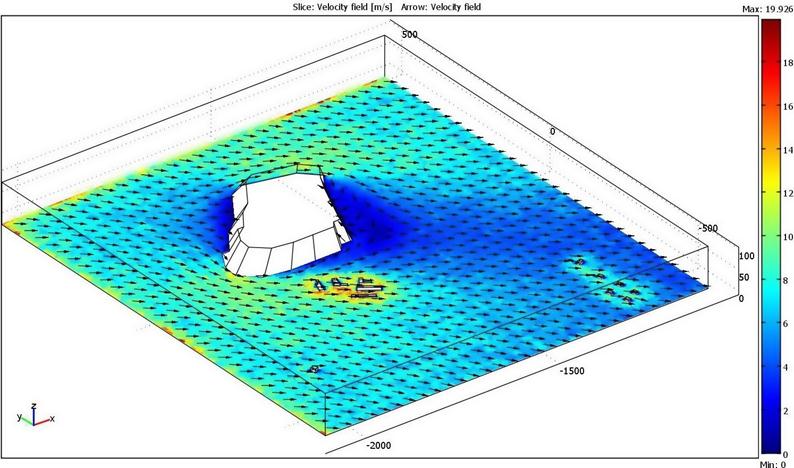
Figure 1 – Field of annual average wind speed, m /sec, near landfill “Centralny” at a height of 2 m
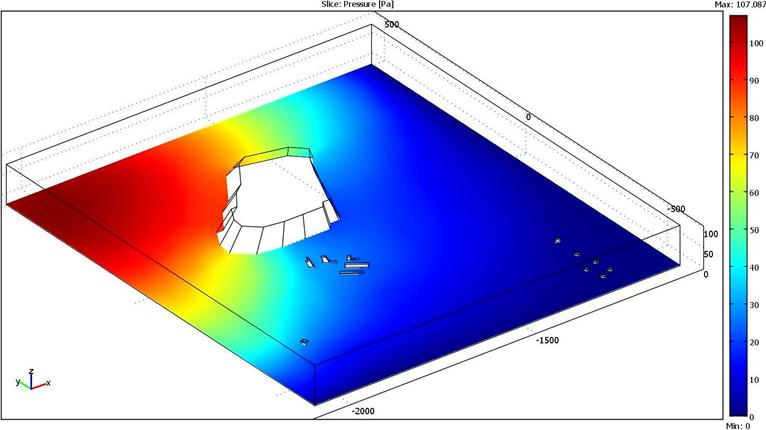
Figure 2 – The pressure field, Pa, near the landfill “Centralny” at a height of 2 m
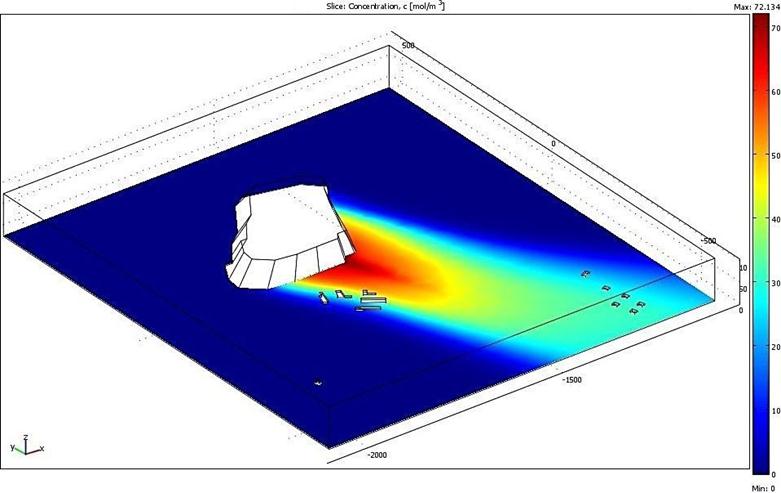
Figure 3 – Field of annual average surface concentrations of methane mol/m3 in landfill “Centralny” in 2007
Figures 7-9 shows the results of the velocity fields of movement, temperature and ammonia concentrations in the indoor air of the building near landfill “Central” of Volgograd. For calculations considered office space on the ground floor area of 18 m2, volume of 46 m3, equipped and unframed walling vent diameter of 100 mm (eg HL 900N NECO). Pressure difference between indoor and outdoor air adopted 56 Pa, outdoor temperature adopted +7 °C, thermal resistance of the outer wall and the window unit to the exterior wall Rс = 3,59 m2∙K/W, window Rок = 4,089 m2∙K/W [2]. Dimensions of the window unit taken 1,7х1,4 m. Heat exchange with the adjacent spaces are not taken into account. The heater is regarded as a cuboids length 1,3 m, width 0,15 m, height 0,5 m on the surface of the device temperature of 66 °C. The adopted Remove air from the room through a slit height of 0,01 m under the closed door.
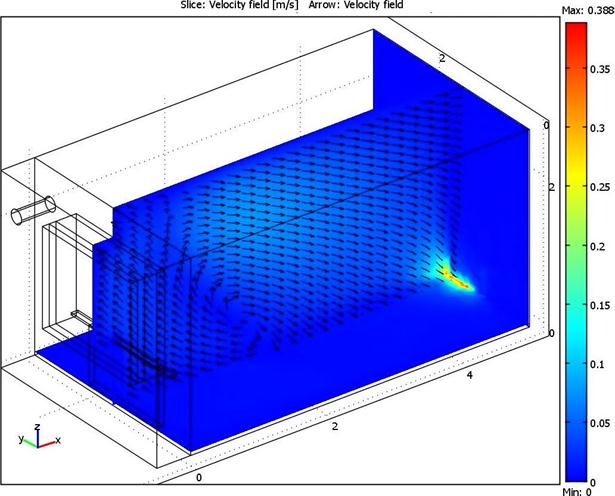
Figure 4 – The velocity field of air, m/sec, in a room with a vent on the ground floor near the landfill “Centralny”
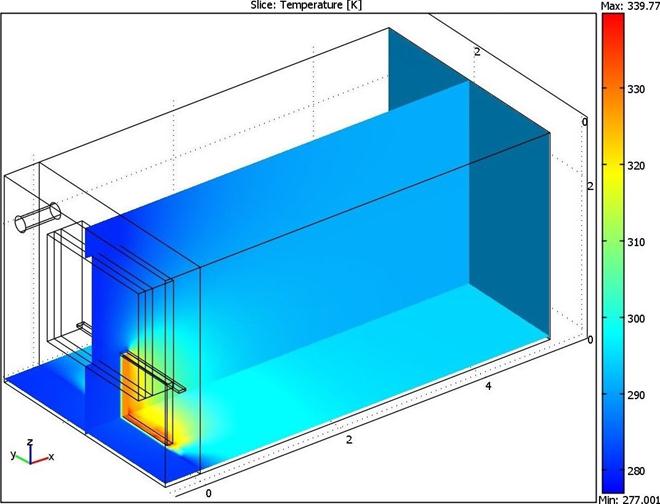
Figure 5 – Temperature field, K, in a room with a vent on the ground floor near the landfill “Centralny”
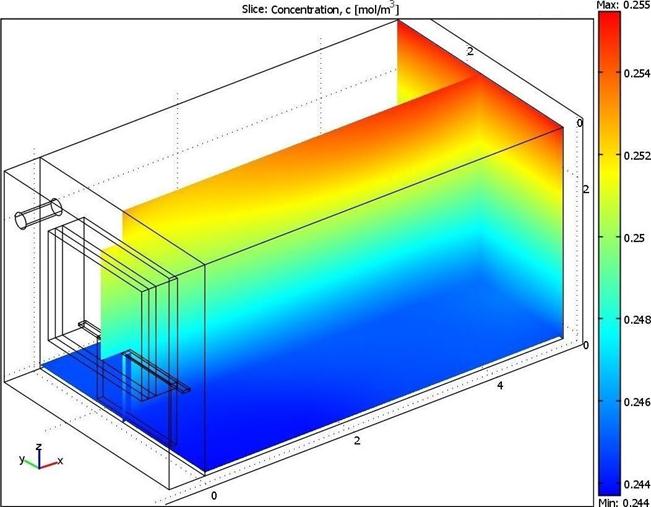
Figure 6 – Field of ammonia concentrations, mg/m3, in a room with a vent on the ground floor near the landfill “Centralny”
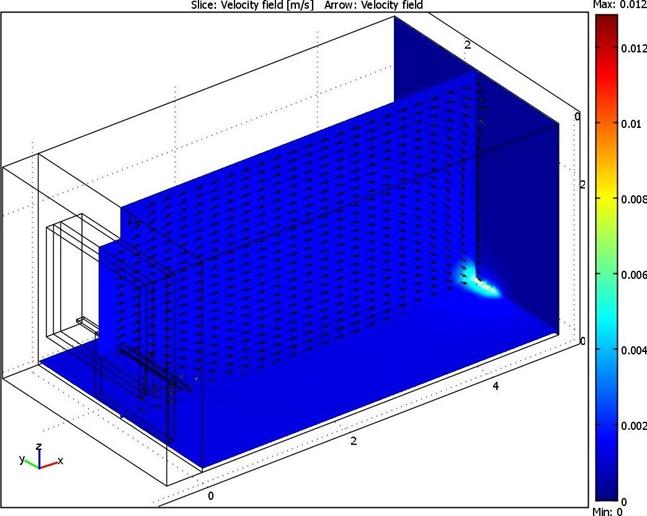
Figure 7 – The velocity field of air, m/s, in a room without air vent on the ground floor near the landfill “Centralny”
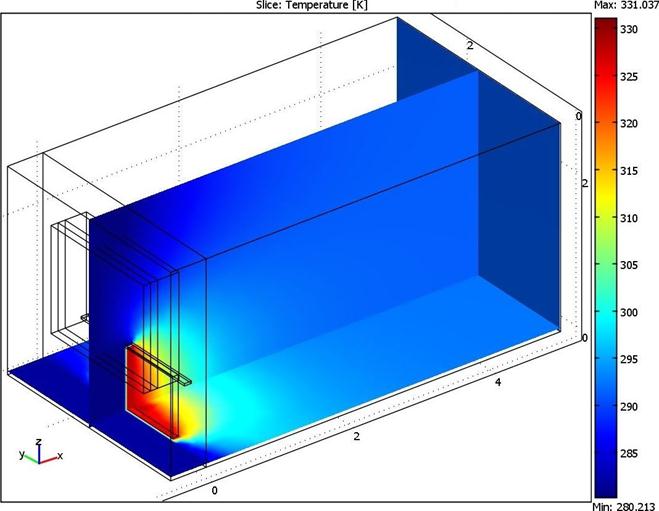
Figure 8 – The temperature field, K, in a room without air vent on the ground floor near the landfill “Centralny”
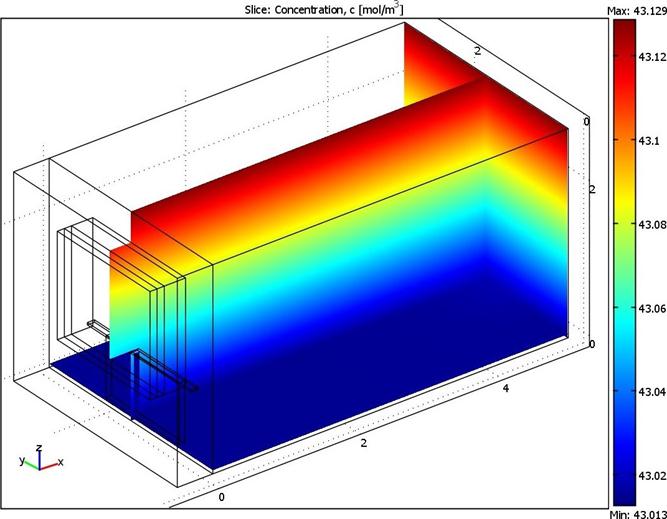
Figure 9 – Field methane concentrations, mg/m3, in a room without air vent on the ground floor near landfill “Centralny”
To reduce air pollution biogas system has been improved its production, purification and collection.
Extraction of biogas produced from gas drainage wells. Assuming that the pressure on the surface of the landfill does not differ from the atmospheric sectional area wells Sскв and amount nскв can be defined as:
 (9)
(9)
there ml is weight l-th component of biogas, tons/year; ратм is atmospheric pressure, Pa; Rl is gas constant, J/(kg×K×mol); N is the number of components of biogas, which is being payment; ![]() is speed biogas wells, m/s, not more than 0,1 m/s.
is speed biogas wells, m/s, not more than 0,1 m/s.
Specific mass of component of biogas mуд, g/s, emitted from each well is defined as:
 (10)
(10)
Surface proposed landfill cover with a film of thermoplastic elastomers. They have a high resistance to oil, fuel and water, exposure to the weather and climatic conditions. This film also has a high mechanical strength and wears resistance.
Figure 10 depicts a schematic diagram of the proposed production and collection of biogas emitted by landfills.
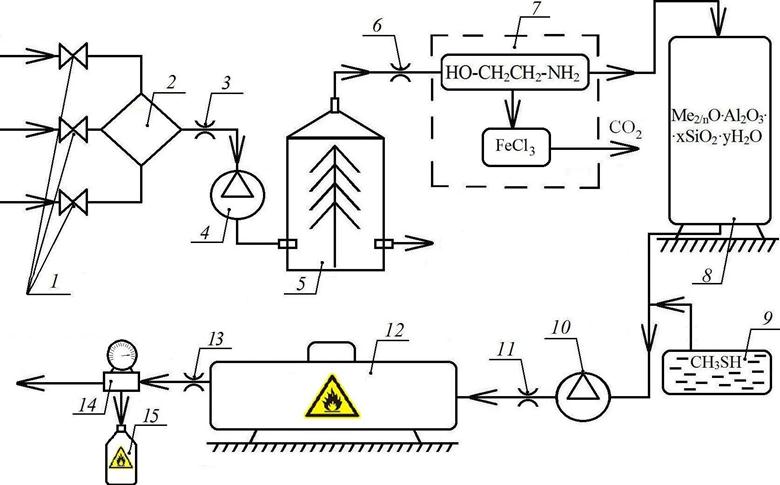
Figure 10 – Scheme of extraction, purification and collection of biogas from landfills
Biogas from landfill gas drainage wells at open valves 1 enters the manifold 2, whence by the compressor 4 is fed into a centrifugal separator 5 for gas purification from moisture and dust. In view of explosion safety gas supply to a separator and subsequent separation of thermosensitive portions of the pipeline shut-off valve equipped with 3 and 6. The gas enters the purification unit of the carbon dioxide and hydrogen sulphide 7. Carbon dioxide is emitted into the air, and the hydrogen sulfide reacts with the iron oxide (III) and is absorbed. From halogenated hydrocarbons, ammonia, and residual gas is purified of other impurities zeolite filter 8 (Ме2/nО∙Аl2О3∙хSiО2уН2О). Purified gas to acquire odor mixed ethyl mercaptan (СН3SН) by setting 9, and then liquefied by the compressor 10 and is supplied to the gas-holder 12, which is liquefied and after the pressure reducer gas is fed into a gas pipeline or refueling gas cylinders 15. In order to land a gas pipeline explosion safety before the gas holder and it is also equipped with temperature-sensitive shut-off valves 11 and 13. This system is a semi-automatic and does not require constant intervention of the staff and most of the elements may be located in the building of administrative area landfills. Water-dust mixture, the resulting separation, reaction products with zeolites is disposed at the landfill. Accumulated biogas meets the requirements for natural gas when used for gas supply. Since methanogens occurs at the site limited number of years, the gas supply system should be compact, in case of need to be dismantled relatively quickly.
Laying pipelines abroad housekeeping area landfill entails additional difficulties associated with construction works. Therefore, it is advisable to supply excess biogas in cylinders. Figure 11 as an example of a perspective diagram of proposed buildings gas housekeeping area landfill “Centralny”, where «I» crossing pipelines connected to the gas drainage wells acts as a collector (equalization) of the gas stream. Compressors, cleaning plant and adding ethyl mercaptan are located in the left building. Removing carbon dioxide from it by means of ventilation.
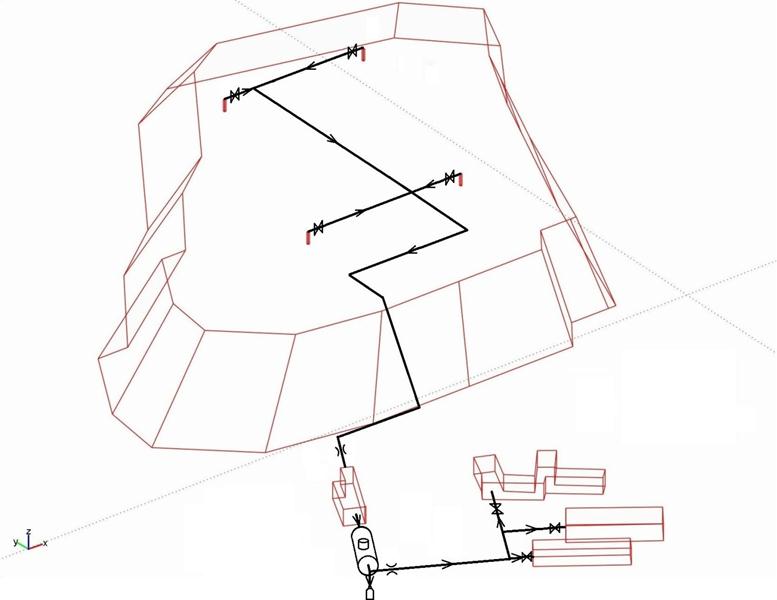
Figure 11 – Scheme of gas supply buildings housekeeping area landfill “Centralny”
Landfill gas energy potential can be estimated Vприр.газа, thousand m3, showing how much you can save natural, if used for the entire gas evolved biogas:
![]() (11)
(11)
here χ is coefficient reflecting the gas leak from its production and supply (in Russia, USA, Germany and Netherlands adopted χ = 0,99); kсж.газа = 1,57 and kприр.газа = 1,154 are coefficients for conversion to tons of equivalent fuel.
When using biogas for gas supply buildings located near landfills, reduced pollution of air and concentrations of most pollutants contained in the biogas may be considered as the background (other than carbon dioxide). Table 1 shows as an example the values of surface concentration of methane in 2007, contained in the ambient air near buildings located near landfill “Centralny” From the warm period during 2006 and providence collection and treatment of biogas.
Table 1 – Surface methane concentration in 2007 in the outdoor air near buildings located at the landfill “Centralny”
| Outdoor air near buildings landfill “Centralny” | Methane concentration, mg/m3 | |
| During collection and treatment of biogas | When not carrying out the collection and treatment of biogas (background) | |
| Housekeeping area | 54,225-10,125 | 0,125 |
| Settlement “Ovrazhny” | 34,125-21,165 | 0,125 |
| Building on the south-west of the landfill | 2,265 | 0,125 |
Also reduce air pollution inside buildings. Table 2 shows the concentration of methane and ammonia inside the building premises calculated housekeeping area landfill “Centralny”.
Table 2 – Concentrations of pollutants in the air in the buildings of the estimated landfill near the “Centralny”
| Сompartment | Pollutant | Сoncentration, mg/m3 | |
| When not using the biogas for gas supply | When using biogas for gas (background) | ||
| With a vent | Ammonia | 0,2465-0,2575 | 0,0025 |
| Without vent | Methane | 43,138-43,254 | 0,125 |
Payback period is determined according to the schedule in Figure 12, which shows that it would be approximately 1,4 years.
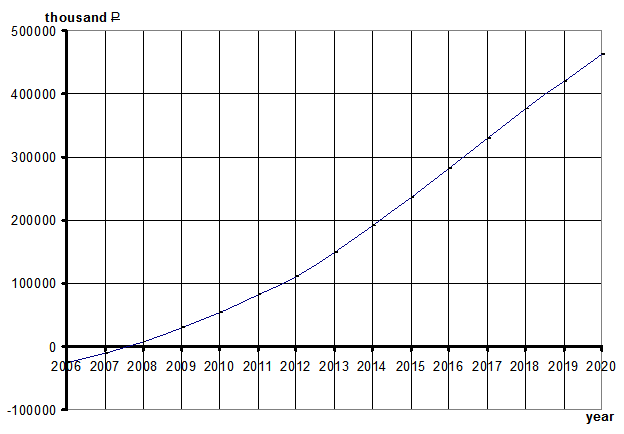
Figure 12 – Graph of the payback period
References
-
Андрианов, К.А. / Строительная физика / К.А. Андрианов, И.В. Матвеева, А.М. Макаров. – Тамбов: изд-во ТГТУ. – 42 с.
-
СП 50.13330.2012: Тепловая защита зданий. Актуализированная редакция СНиП 23-02-2003; утв. Минрегион РФ 30.06.2012; ввод в действие 01.07.2013. –
Изд. офиц. – М.: Минрегион РФ, 2012. – 100 с.
